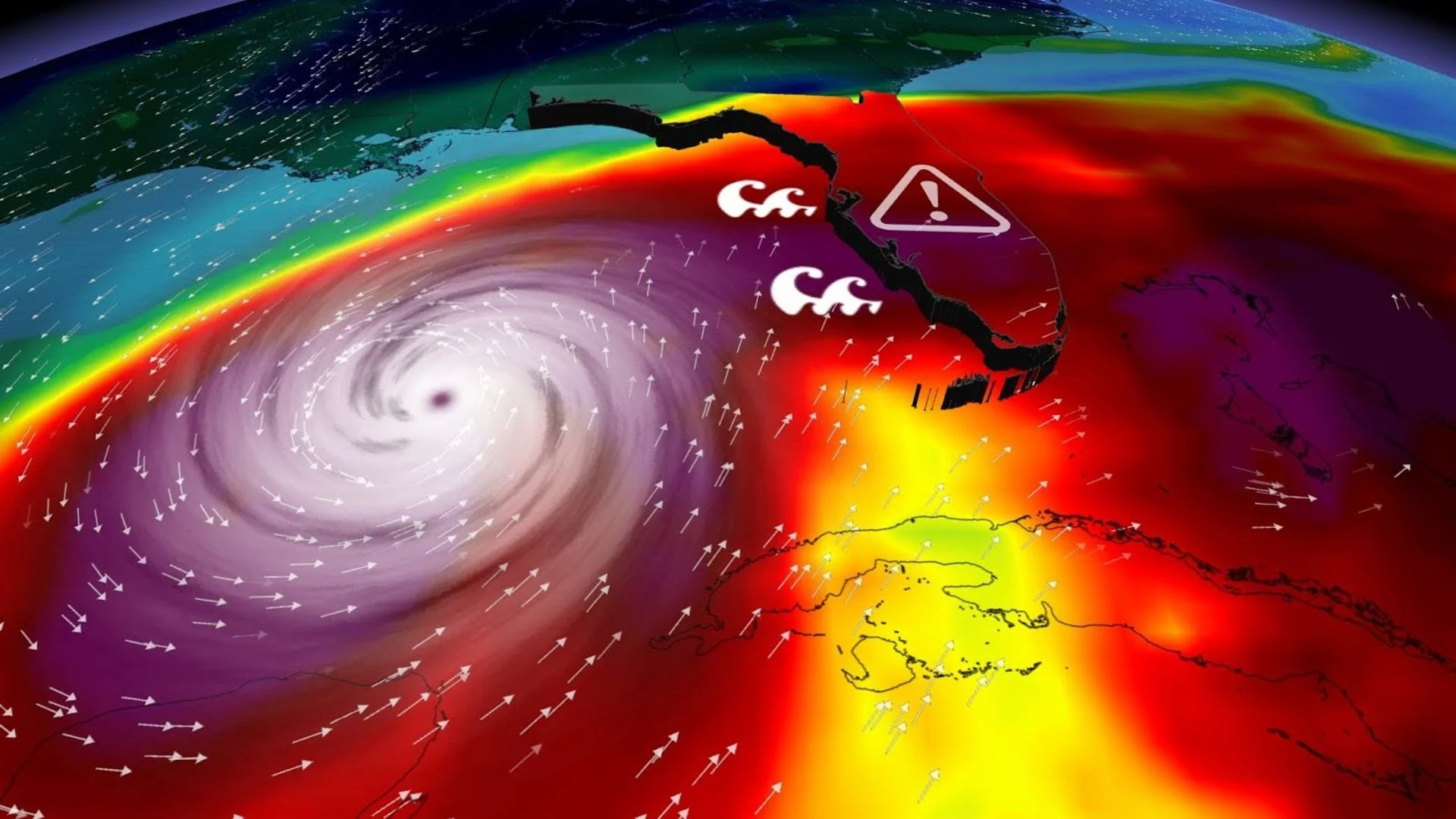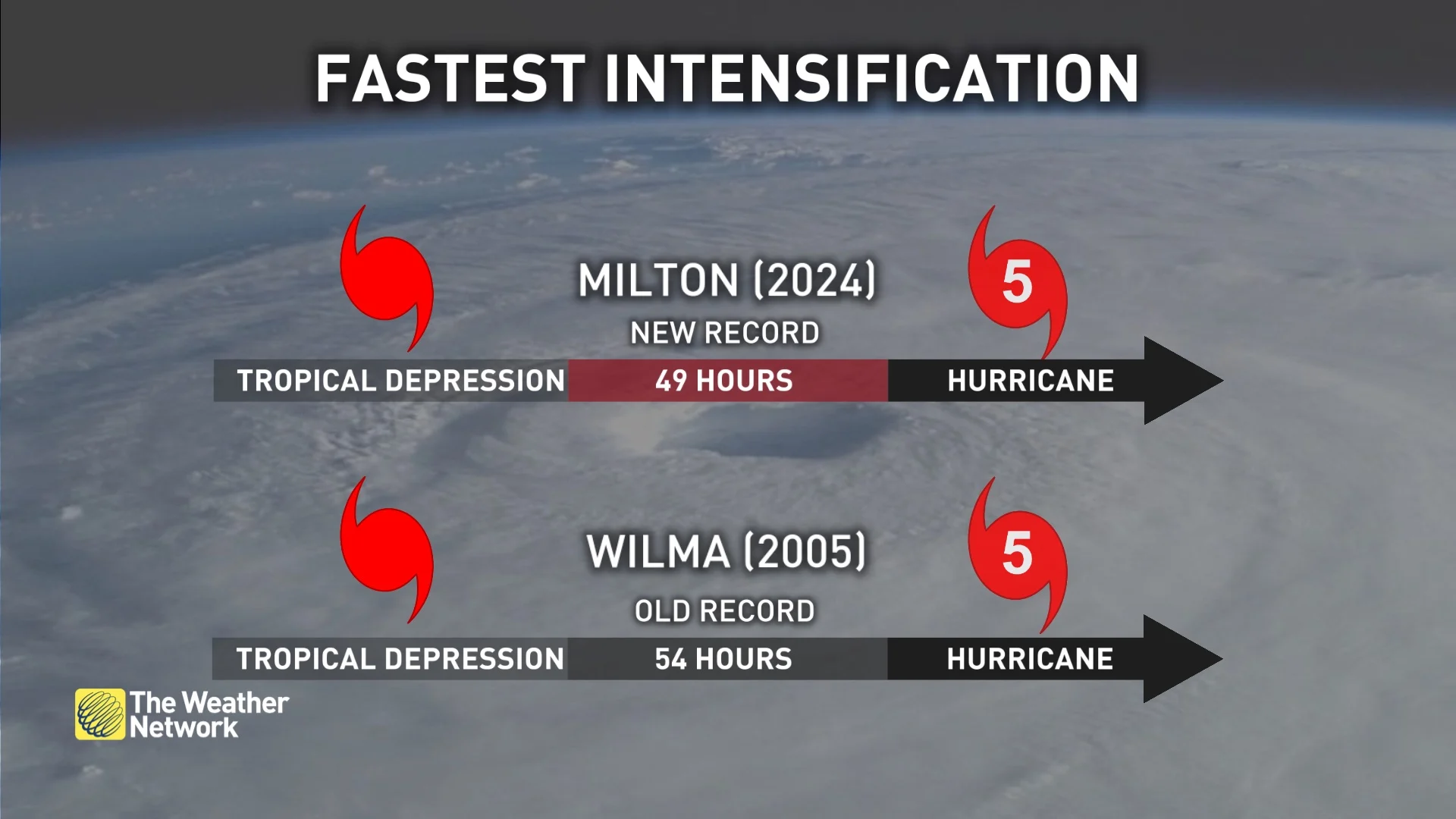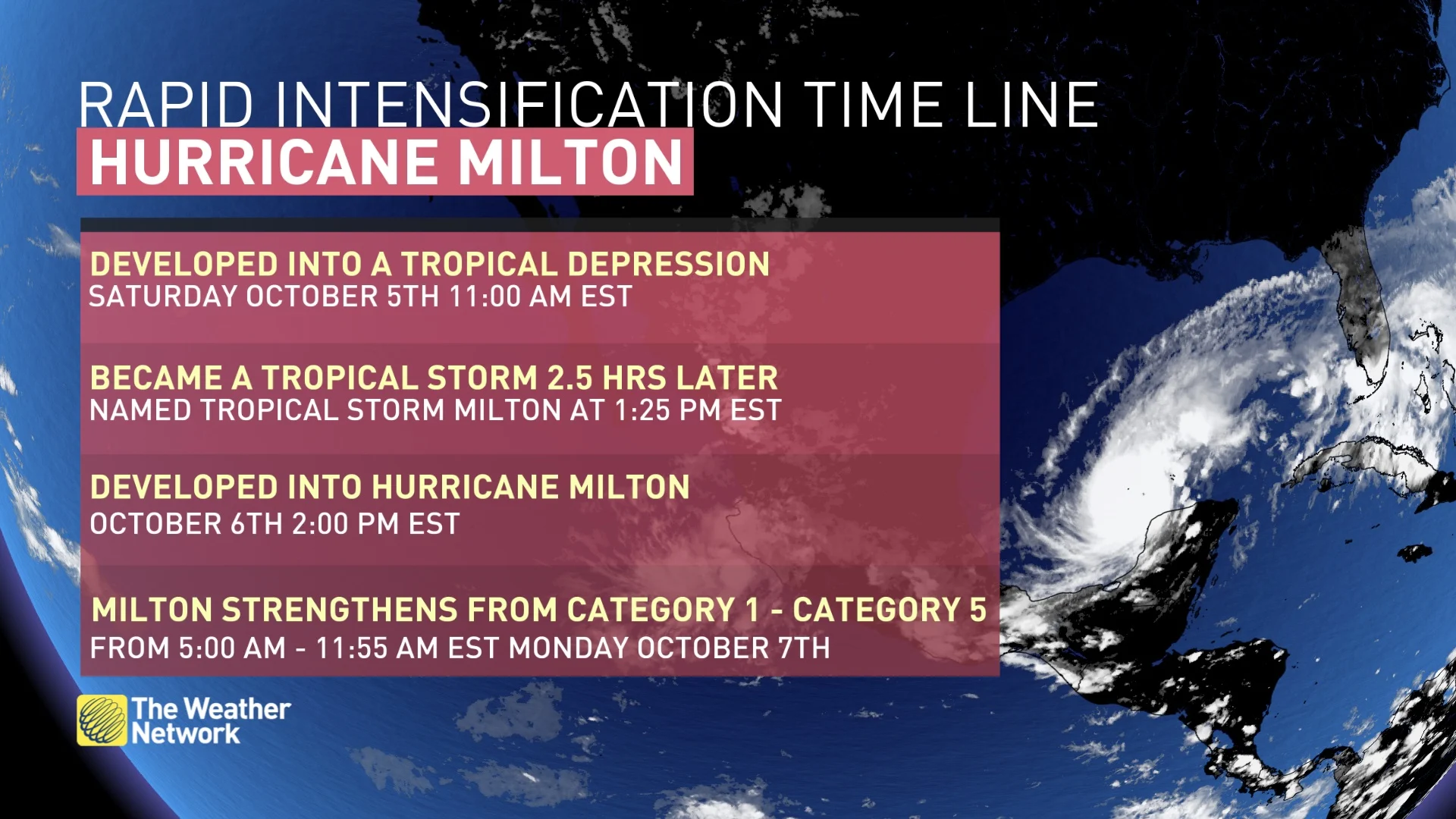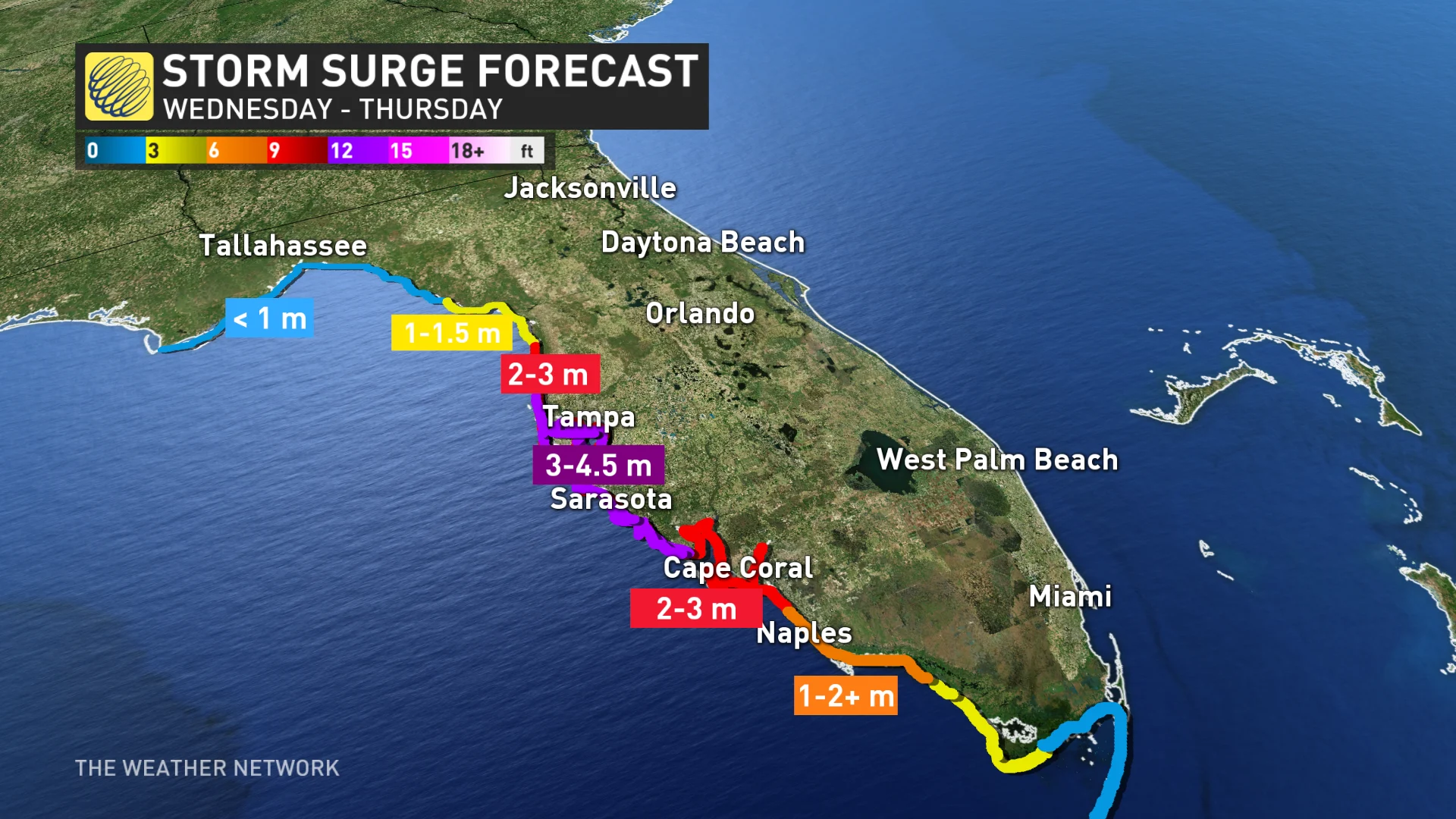
How Milton made a name for itself as a major hurricane in 49 hours
A little more than two days ago, Milton didn't even have a proper name. Now, as a Category 5 hurricane, Milton is on the verge of making history with its destructive, potentially deadly power
Milton's impending, potentially damaging impacts on western Florida will not soon be forgotten, nor will its rapid ascension to major hurricane status.
In fact, Milton is now the fastest storm on record to strengthen from a tropical depression to a Category 5 hurricane, taking just 49 hours to do so. The previous record was held by Hurricane Wilma, taking 54 hours to make the same feat.
DON'T MISS: Nightmare scenario unfolding for Tampa with Milton's potential hurricane track
On Monday, as part of its quick metamorphosis, Milton made an astounding jump from a Category 2 to a Category 5 hurricane within mere hours. At the moment, it boasts maximum, sustained winds of near 285 km/h, making it an "extremely serious threat" to Florida, according to the U.S. National Hurricane Center(NHC).

Anyone in Florida this week should take this storm seriously and closely monitor the latest forecasts and alerts from local officials.
Milton propels itself into Category 5 status in a short time
It is an understatement that Milton has under gone rapid intensification over its life cycle.
With many more days to go and some strengthening, Milton is already joining the top-ranked storms in the Atlantic hurricane basin.
So, how did it go from a tropical depression to a menacing, Category 5 hurricane in under 50 hours?
Milton developed on Saturday as a tropical depression and quickly intensified into a hurricane during the day on Sunday.

Favourable environmental conditions, along with very warm ocean waters, have allowed the system to continue intensifying as it heads east toward Florida. The storm rapidly picked up major hurricane status early Monday morning, with additional strengthening that led to a Category 5 upgrade by 12 p.m.
Its greatest, maximum pressure drop in 24 hours for Milton was 84 millibars, occurring from 8 p.m. on Sunday, Oct. 6 to 8 p.m. on Monday, Oct. 7. The current record belongs to Hurricane Wilma, which dropped 97 millibars in a 24-hour time period.
It is the strongest hurricane to form in the Gulf of Mexico this late in the calendar year, and is tied for the sixth-strongest hurricane in the Atlantic basin overall.
Development timeline
U.S. National Hurricane Center (NHC) outlined an area of interest on Sept. 26
Developed into Tropical Depression 14 on Saturday, Oct. 5 at 11 a.m. EDT
Became a tropical storm 2.4 hours later, and was named Milton at 1:25 pm EDT
Milton developed into a hurricane on Oct. 6 at 2 pm EDT
On Monday, Oct. 7, at 5 am EDT, Milton increased in strength to a Category 2 hurricane
Two hours later, Milton became a major hurricane, reaching Category 3 status
At 9:05 a.m. EDT, Milton strengthened to a Category 4 hurricane
At 11:55 a.m. EDT, Milton strengthened into a Category 5 storm
Milton is forecast to make landfall as a major hurricane, marking the fourth time that two major hurricanes made landfall in Florida in the same year.

Tampa Bay, Fla., is forecast to see its highest storm surge ever, reaching as high as 3-4.6 metres (10-15 feet) above ground. It will likely Tampa Bay's most destructive, landfalling hurricane.
With files from Matthew Grinter, a meteorologist at The Weather Network, and Nathan Howes, a digital journalist at The Weather Network.











